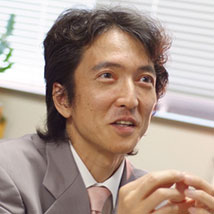- HOME
- > Research Highlight: Nano-technology for high-speed radiation sensors
Research HighlightNano-technology for high-speed radiation sensors

Radiation sensors are used in various fields of science and industry. Recent enhanced capability of radiation sources and expanded uses of these devices have raised the demand for high-performance detectors. At the Department of Applied Chemisry, Chemical Engineering and Biomolecular Engineering of the School of Engineering at Tohoku University, Professor Keisuke ASAI and his team are developing radiation sensors based on photon emission upon impinging radiation, i.e., scintillation, and radiation-induced changes in the optical properties. Basic processes responsible for photo emission and radiation-induced changes are being elucidated. “As an example of materials development using various compounds, here we introduce the development of organic–inorganic hybrid scintillators,” explains Professor ASAI, “Detectors with fast response are required for the detection of synchrotron radiation X-ray photons. Plastic scintillators are appropriate for such applications.”, however, owing to low atomic numbers of their constituent elements and resulting low interaction probability with high-energy X-ray photons, the detection efficiency is low. To enhance the detection efficiency of these materials, it is effective to incorporate elements of high atomic numbers. “We have successfully fabricated plastic scintillators incorporating elements of high atomic numbers as oxide nanoparticles with two unique methods: the sol-gel method and the two-step supercritical hydrothermal method,” says Professor ASAI. “The two-step supercritical hydrothermal method forms nanoparticles in the first step, and in the second step the nanoparticles are incorporated into the plastic scintillators. At present, we are demonstrating the effectiveness of this approach at a synchrotron radiation facility ‘Photon Factory’ with researchers of the High Energy Accelerator Research Organisation (KEK) located at Tsukuba.”
